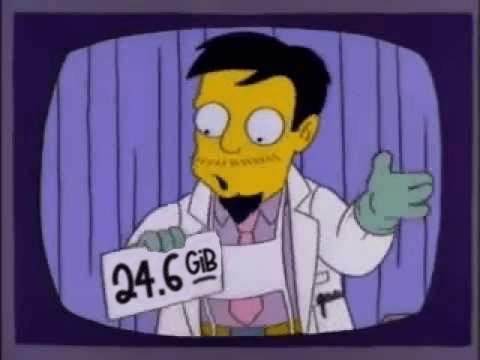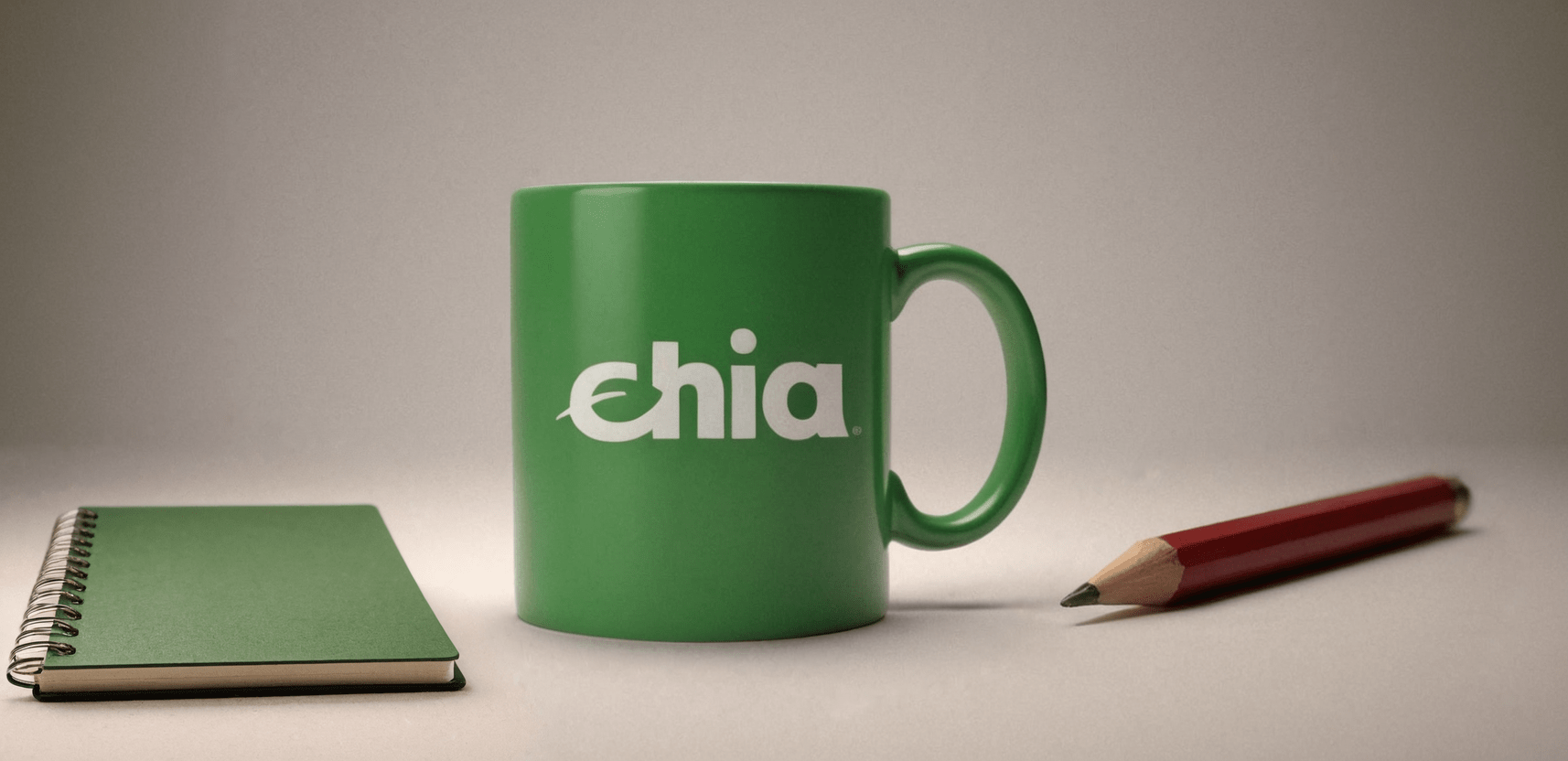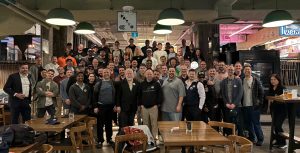Peer-to-Peer is a series of Q&A style interviews with members of the Chia community. This interview is with Dr Nick, the creator of the latest compressed plotting and farming solution to hit the scene, DrPlotter.

DrPlotter was announced in February 2024 and boasts by far the most impressive plot format we’ve seen to date: 24.6GiB k32 plots. The tradeoff is that plotting and farming both require a 24GB Nvidia GPU (3090/4090/A5000) and there is a more limited max farm size compared to existing solutions. However, the resulting operating efficiency per TBe is very high.
Dr Nick also released a video explaining how DrPlotter works in more detail and how he incorporates security and decentralization into his design. This is worth a watch before jumping into the interview.
Hi Dr Nick. Thank you for taking time to answer some questions about yourself and your new plotting software that just hit the scene, DrPlotter. First I’d like to learn a bit more about you. How did you first get involved in Chia and what made you decide to build a plotter?
My venture into Chia began just after mainnet launch. I started my first plots on an old Mac laptop, which was, I have to say, a painfully slow experience. Seeking better performance, I then tried a used gaming PC. Still painful. The M1 just came out: expensively painful. Then I got a 128GB RAM PC and used the MadMax plotter and it was better, but didn’t net many more plots per day. Never underestimate a pain point as a driving motivational force! I figured, I have 128GB RAM, surely we can do all ram and I just started reading the docs and re-learning C++ and modern RAM optimizations. When Bladebit came out I had a working phase 1 that performed really well, but then discovered the way to compression, and quickly switched to writing a GPU plotter after that.
Can you give readers your elevator pitch for DrPlotter? What sets it apart from existing compressed plot solutions?
DrPlotter stands out as the only third-party plot compression system tailored for Chia farming best practices that prioritizes efficiency, security, and decentralization for the Chia blockchain. It offers two highly compressed plot formats that significantly enhance ROI across various market conditions. Compatible with any farming software that supports the standard harvesting protocols, and without the use of private keys, DrPlotter empowers a robust network of independent farmers. This contributes to crucial decentralization efforts, strengthening the blockchain by raising its Nakamoto Coefficient. DrPlotter is more secure, more profitable, and offers a more resilient Chia farming experience than other solutions.

Did you create DrPlotter with a particular type of farmer or farm set up in mind?
I really wanted to make Chia farming something anyone serious could get into without being a computer expert or using commercial-grade equipment. I was aiming for something that enthusiasts like me could use, running on the kind of hardware you’ve already got at home, but squeezing out every bit of efficiency with as few parts as possible. My goal was to create an all-in-one consumer PC that was ready to farm up to 1 PiBe, just like that. By keeping it simple, scaling up means just setting up another unit whenever you’re ready. Plus, if something goes sideways, it’s just that one box you’ve got to worry about, which makes life a lot easier.
Do you see it being a challenge to scale out for farms beyond a certain size?
For running larger operations, you can hook the DrPlotter harvester up to a JBOD for all that storage, and then scatter your GPUs across mining rigs once you’re done plotting. You can even place those rigs wherever it’s cheapest to run them, to improve efficiency and cut down on costs. There’s a lot of flexibility to grow your farm in a smart, manageable way.
Can you clarify how your developer fee works? The video mentions a small % of proofs going to you whereas the GitHub mentions user resources allocated to support your own plots and farm.
The explanation on GitHub was the initial description after launch and was a bit too vague, leading to some misunderstandings. When I mentioned ‘user resources,’ I specifically meant a small portion of GPU processing time and a bit of HDD space would contribute towards solving developer proofs. I realize now that the lack of specificity might have raised concerns about the potential for unauthorized use of users’ systems, which was never the intention.
To clarify, as detailed in the video, the process is straightforward and transparent: occasionally, your system will solve a developer proof found in a DrPlot, similar to how it handles your own proofs in your DrPlots. However, these solved developer proofs are then directed to my farmer to create the block, not yours. So, this scales automatically with each DrPlot created and new user that joins the system. From the user’s perspective, they get what’s advertised without having to worry about additional or changing fees.
Your design seems to be very deliberate in supporting decentralization of the Chia network. Is DrPlotter compatible with CHIP-22? How would adopting CHIP-22 change your design?
Supporting the decentralization of the Chia network was a non-negotiable requirement for me during the development of DrPlotter, which is partly why the design and development phase was so extensive.
When CHIP-22 was introduced, DrPlotter was nearing completion and, as it stands, it’s not currently compatible with this proposal. I understand some users have reservations about the ‘random’ nature of the developer fee in CHIP-22, especially when it feels like luck isn’t on their side, leading to a perception that they’re contributing more than expected.
Adopting CHIP-22 would fit pretty seamlessly within the DrPlotter framework. I’m also committed to ensuring a smooth transition for users, which includes providing a tool to convert their existing DrPlots to a version for CHIP-22, so that no full replot is necessary.
DrSolver appears to be a centralized point of failure for your solution right now. Do you see this as a concern and if so, are there plans to change how it works? Perhaps an option to use a local solver and just accept missed proofs when there are signage point spikes?
Absolutely. Right now the server is very efficient and scalable, it can have a bunch of fail-over servers, and is behind CloudFlare and additional DDoS protections, but the roadmap for the 1.0.0 release includes an option to run a local server. To run fully locally without internet connection CHIP-22 would be a requirement, as otherwise there wouldn’t be a way to collect developer rewards, and I don’t want to provide a closed source farmer that requires your keys.
What are your thoughts on the future of Chia farming? Do you anticipate someone to come out with a more efficient solution with smaller plot sizes? Are you expecting a k-size increase or new plot format in the future?
Thinking about the future of Chia farming is like trying to hit a moving target. It’s all intertwined with the evolution of various technologies – we’re talking about things like how hard drives are getting bigger and cheaper, disk seek times, diminishing cost per storage for SSDs, the speed and power consumption of GPUs, and more. Right now, I feel like the plot filter is pretty well dialed in to be in-step with technological progress, which should make future re-plots less necessary.
For us to see a leap in efficiency or smaller plot sizes, it would take a real breakthrough in algorithms. That’s not something you stumble upon every day. I might have one more in me.
As for bumping up the k-sizes, personally, I’m not a fan of the idea. Sticking with k32 makes Chia farming accessible for everyone. Moving to k33 or k34 doesn’t change that much for the compression capabilities of DrPlots, they will still perform almost linearly with k size increases, but it would definitely make getting into farming more expensive. And when you think about plot grinding – focusing purely on computation without using storage – it just doesn’t add up financially. Even with something smaller, like a k30, you’re better off using a bit of disk space that costs next to nothing but will drastically cut down on computation needs. Think of it this way, if Chia had only released a plot grinding harvester, how long do you think it would be before someone added a few bits of data to be stored on disk to improve efficiency?
Talking about a new plot format, we’re still going to face challenges like Hellman attacks and other forms of compression that we might not have even explored yet. The whole point of Chia’s plot system was to make something energy-efficient that strengthens the network through each plot’s existence. Compression plays into this idea. We’re never going to see a scenario where it’s all about GPU grinding or solely relying on storage for proofs. I think the key is in recognizing the value of pre-computed plots. They aren’t just arbitrary; they’re what make the Chia network so robust and unique. It’s not just about the level of compression – it’s about using that precomputation time to secure the network in a way that’s not as simple as flipping a switch, like you would with traditional proof of work.
Can you talk about some of the things you’re working on next? What type of DrPlotter speed up and DrSolver tuning impacts can we expect? Any teaser on “a few more surprises” that you mentioned in your video?
I’ll be working on some of DrPlotter’s pain points. Currently plotting is “slow” and you have to wait for it to finish before you can harvest on the same GPU, so I have some solutions coming to make that better. The DrSolver will see some improvements, especially for the 4090. There are a lot of services and tools I can build around the central server, I am really excited about the potential for some of those.
There will be at least one thing that wasn’t thought to be theoretically possible before now.
Besides farming, what makes you most excited about the Chia blockchain?
The team behind it is very experienced, and they have built a really solid foundation by addressing many fundamental issues across other blockchains. Now they have the benefit of adding new features regularly that other blockchains haven’t been able to do as elegantly. But honestly, I’ve been too deep into the plotting and harvesting side to really appreciate all the features. Chialisp is something I want to look more closely at in the future.
Thank you again for your time, are there any other comments you want to share with the readers of XCH.today?
Thank you for the chance to share my thoughts with the XCH.today readers. Honestly, stepping out and engaging with the community has been a big leap for me. I’ve been quite reserved, focusing on my work with Chia from behind the scenes. It’s been incredibly energizing to finally connect with other Chia farmers and see the initial enthusiasm and support.
I have a lot still to do and I’m excited about what’s ahead and this time doing it with such a supportive community.
Editor’s Note: As with any third party software, do take all necessary precautions to ensure the safety of your network. Consider installing on an isolated system/network and never ever provide your private keys on a system you do not fully trust.









[…] new article on XCH.today “Peer-to-Peer: An Interview with DrPlotter creator, Dr Nick” […]
[…] plot formats from third parties such as Gigahorse, NoSSD, and most recently DrPlotter has led to the following objective facts due to different implementation choices from these […]